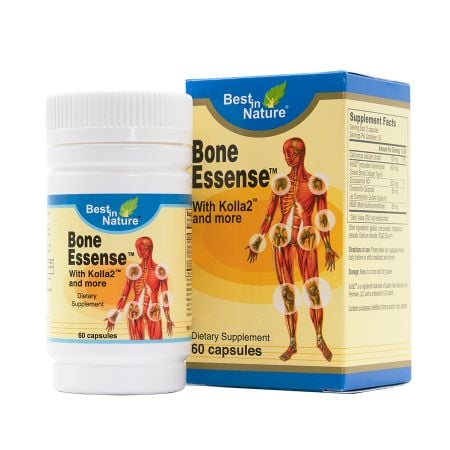
When you hear the term biological age, you might imagine some complex analysis with multiple tests and machines, but one simple measure is in the palm of your hand. A recent study has shown your grip strength can tell a great deal about your overall health and biological age. A strong grip is a positive health marker and oppositely a lack of grip strength is correlated with a host of age-related negative health outcomes. Can getting a grip on our health turn back the hands of time? Let’s find out.
What is Grip Strength?
Grip strength, as its name implies, is how firmly and securely you can hold or grip onto objects combined with the object’s weight. In more scientific terms, grip strength is a measure of the maximum force you can generate with your forearm muscles. While your grip itself involves relatively few muscles, it can be used as a proxy measure of your overall strength.
What is Biological Age?
There are two types of age, chronological and biological. Your chronological age is simply the number of years since you’ve been born. Your biological age, on the other hand, is how old your cells and tissues are based on two key measures; telomeres and DNA methylation. So how are these two things related?
The Link Between Grip Strength and Biological Age
The study we mentioned previously aimed to determine a link between grip strength and DNA methylation and in turn biological age. Researchers followed 1,274 middle-aged men and older adults over the course of 8 to 10 years to follow the associated relationship in absolute grip strength and DNAm age acceleration.
The abstract of the study and its methodology are available online. But the basic findings were that for men and women lower grip strength is a clinically relevant indicator of your biological age. Decreased grip strength was associated with DNA-methylated age acceleration. And in contrast, a lifestyle that results in maintained grip strength could have protective effects against this type of biological aging. (study limitations).
Examples of Grip Strength’s Correlation with Other Health Markers
Biological age and DNA methylation may seem a bit abstract so here are some specific examples of how grip strength correlates with major health areas.
Bone Density
Low grip strength is correlated with low bone mineral density to the extent that it’s a risk factor for osteoporosis. This puts those with lower grip strength at greater risk for hip fractures and what are known as fragility fractures defined as fractures resulting from a fall of standing height or lower.
Heart health
A strong grip is a leading indicator of a strong heart. A Prospective Urban and Rural Epidemiological study followed 140,000 respondents in 17 countries for 4 years. Among participants, each 11-pound decrease in grip strength correlated with a 17% higher risk of dying from heart disease, a 9% higher risk of stroke, and a 7% higher risk of heart attack.
Brain Health
Brain vs Brawn. Well…not necessarily. In this study from the NIH, grip strength was strongly related to visual memory, reaction time, reasoning, and number memory.
Mobility
People with decreased walking speed are more likely to have decreased grip strength. Decreased walking speed, defined as 0.8 meters per second or slower, is itself a predictor of poor clinical outcomes.
In short, your grip strength can tell a lot about your ability to stay strong and mentally sharp as you age.
How to Find Out Your Grip Strength
Now that you understand how big of a health indicator grip strength is, you’re probably wondering where you stand. There are a few options to measure your grip strength but the easiest is to purchase and use a hand dynamometer.
To use the dynamometer properly:
- Hold your arm with your elbow bent at a 90-degree angle.
- Squeeze the dynamometer as hard as possible.
- Apply grip force in a smooth motion while avoiding jerking.
- Repeat twice for a total of three readings.
- Your grip strength is the average of the three readings.
You can also measure your grip strength with a bathroom scale using these instructions from Wikihow.
How Strong Should Your Grip Be?
Because grip strength is something that declines with age, values are mostly provided in the context of what is needed to preserve functional strength.
For older adults to perform moderate to heavy lifting tasks, women should maintain a grip strength of at least 40 pounds and men should have a grip strength of at least 60 pounds according to this analysis. Unfortunately, there aren’t further benchmark recommendations for younger age groups.
Could Building a Strong Grip Turn Back the Biological Clock
To put it briefly. No. Putting the squeeze on a GripMaster or a stress ball for a few hours a day won’t turn back the hands of time. You’ll probably just make people afraid to shake your hand. Grip strength is a clinically significant health marker but improving it on its own is not the answer.
However, overall exercise might be able to reverse the biological clock. Studies have shown that weight-bearing or resistance exercise can both reverse biological markers of aging.
Bottom Line
Your biological age as understood by the quality of your cells and tissues is highly correlated with your grip strength as indicated by its link to so many quality-of-life indicators. Keep in mind that improving your grip alone won’t strongly enhance your health. It’s only an indicator. Instead, focus on strength training and eating a healthy diet rich in healthy fats and vitamins and supplementing where necessary. Taking these steps will improve your health indicated by the strength of your grip.
This article is provided for informational purposes only and is not intended to be used as medical advice. If you have immediate concerns about your health, please seek the help of your physician.








Validate your login
Sign In
Create New Account